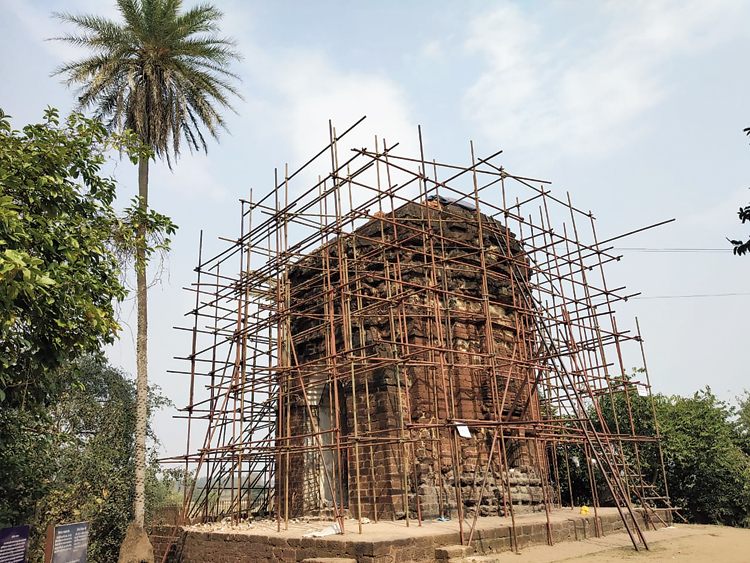The Archaeological Survey of India has hired two dozen experts from Odisha to renovate a 13th century temple that developed cracks because of the erosion of the nearby Dwarakeswar river at Dihar in Bankura district.
Subha Majumder, the superintending archaeologist of the ASI’s Calcutta circle, has said the Sareswar shrine at Dihar is similar to stone-made temples in Odisha.
Dihar is around 10km from Bankura’s temple town Bishnupur.
ASI officials said the Sareswar temple had undergone thorough renovation 45 years ago but became dilapidated because of erosion of the riverbank. The ASI will also renovate the Shaileswar temple at Dihar, which is though in a better condition.
Sources said the two temples of lord Shiva — Shaileswar and Sareswar — had been built using laterite stones in the middle of the 13th century during the time of Prithvi Malla, a king of famous Malla dynasty.
The ASI officials said the riverbank erosion had led to several cracks in the temples, mainly in the upper parts. The ASI started the renovation of the Sareswar temple from the first week of February. “It is good news that the ASI has started refurbishing the Sareswar temple. It was dilapidated because of its age,” said Giridra Sekhar Chakraborty, a state government employee and a researcher of local history in Bankura.
Dihar is considered one of the ancient sites where researchers of Calcutta University’s archaeological department conducted excavations thrice, last time in 2011. “During excavations, we got evidence of chalcolithic civilisation that is at least 2,500 years old. So, it is an important place for us,” said Majumder.
The ASI said damaged laterite tiles would be replaced. The initial budget of the renovation’s first phase has been estimated at Rs 40 lakh. The cost might increase as the work progresses.
The ASI officials said the Sareswar temple had initially been treated as a structure with flat roof but during the renovation, evidence of the existence of a tower had emerged. “We got two layers of roofs at the Sareswar temple. So, we suspect the roof had a tower that was ruined before the ASI took it over in the early 1900s,” an official said.











